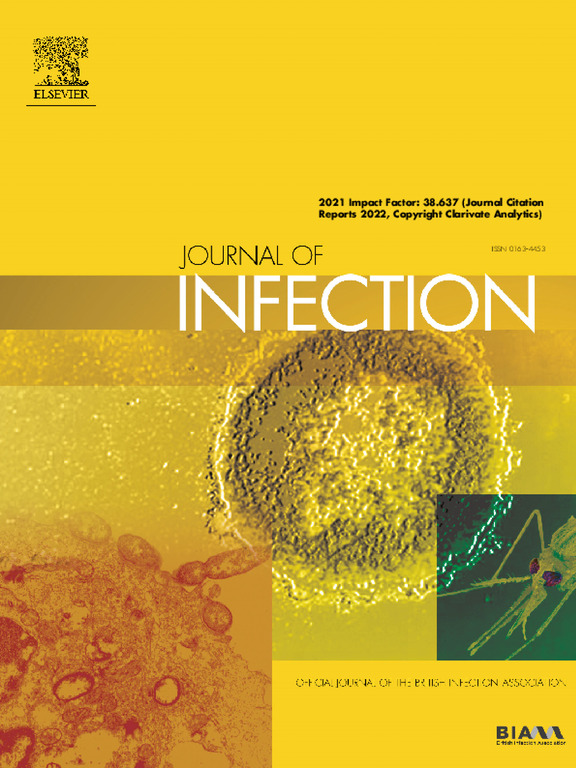非hiv患者肺囊虫性肺炎的危险因素和易感条件:一项为期7年的多中心研究。
IF 11.9
1区 医学
Q1 INFECTIOUS DISEASES
引用次数: 0
摘要
随着肺囊虫性肺炎(PCP)在没有确定免疫损害因素的非hiv患者中越来越多地发展,该研究检查了不断变化的易感因素和高危药物。方法:本多中心回顾性研究纳入了2016-2023年7个临床中心的非hiv PCP。患者根据暴露的药物和潜在的易感疾病进行分类。报告了人口统计学特征、疾病严重程度、治疗方法和结果。结果:发现非hiv PCP 470例,纳入420例疑似病例进行分析。没有确定高风险药物的PCP比例从2016年的47%增加到2023年的61%。209例(49.8%)接受了确定的高危药物治疗,106例(25.2%)接受了疑似高危药物治疗,155例(36.9%)未接受高危药物治疗。已确定高危药物的受试者更容易发生血液系统恶性肿瘤(50.2%)。结论:非hiv PCP的流行病学正在超越传统的风险类别。新出现的高风险药物和易发合并症可能需要进一步调查,并在预防指南中加以解决。本文章由计算机程序翻译,如有差异,请以英文原文为准。
Evolving risk factors and predisposing conditions of Pneumocystis pneumonia in non-HIV patients: A seven-year multicenter study
Objectives
As Pneumocystis pneumonia (PCP) increasingly develops in non-HIV patients without established immunocompromising factors, the study examined the evolving predisposing factors and at-risk medications.
Methods
This multicenter retrospective study included non-HIV PCP at seven clinical centers from 2016–2023. Patients were categorized by exposed medications and underlying predisposing diseases. Demographic characteristics, disease severity, treatment approaches, and outcomes were reported.
Results
470 non-HIV PCP were identified, and 420 probable cases were included for analysis. The proportion of PCP without established high-risk medications increased from 47% in 2016 to 61% by 2023. 209 (49.8%) received established high-risk medications, 106 (25.2%) with suspected at-risk medications, and 155 (36.9%) with no at-risk medications. Subjects with established high-risk medications were more likely to have hematological malignancies (50.2%, P<0.001). Those with suspected at-risk medications had higher rates of solid cancers (63.2%, P<0.001) and transplantation (24.5%, P<0.001). Overall mortality rates were 43.8% at 60-day, with comparable mortality across medication groups (log-rank P=0.08) but significant differences by disease category (log-rank P<0.001), with solid cancers exhibiting the worst outcome (58.0%).
Conclusions
The epidemiology of non-HIV PCP is evolving beyond traditional risk categories. Both emerging high-risk medications and predisposing comorbidities might require further investigation and addressed in prophylaxis guidelines.
求助全文
通过发布文献求助,成功后即可免费获取论文全文。
去求助
来源期刊

Journal of Infection
医学-传染病学
CiteScore
45.90
自引率
3.20%
发文量
475
审稿时长
16 days
期刊介绍:
The Journal of Infection publishes original papers on all aspects of infection - clinical, microbiological and epidemiological. The Journal seeks to bring together knowledge from all specialties involved in infection research and clinical practice, and present the best work in the ever-changing field of infection.
Each issue brings you Editorials that describe current or controversial topics of interest, high quality Reviews to keep you in touch with the latest developments in specific fields of interest, an Epidemiology section reporting studies in the hospital and the general community, and a lively correspondence section.
 求助内容:
求助内容: 应助结果提醒方式:
应助结果提醒方式:


